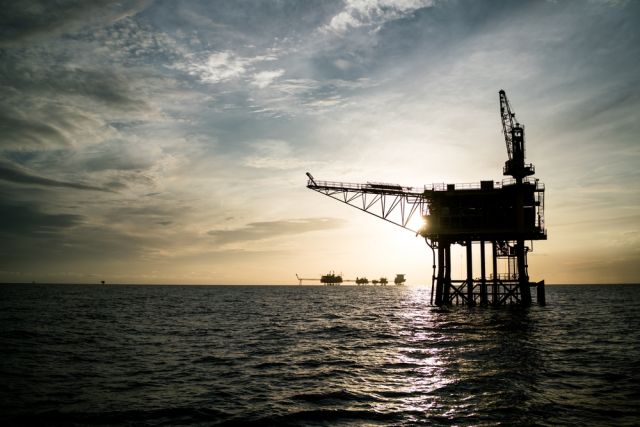
Shell Plc’s subsidiary Shell Trinidad and Tobago Ltd. has taken a final investment decision (FID) on the Manatee cross-border gas field straddling the maritime borders of Trinidad and Venezuela. (Source: Shutterstock)
Shell Plc’s subsidiary Shell Trinidad and Tobago Ltd. has taken a final investment decision (FID) on the Manatee cross-border gas field straddling the maritime borders of Trinidad and Venezuela.
Manatee will start production in 2027 and add much-needed gas volumes to Trinidad and Tobago’s gas production profile.
Manatee’s production is expected to peak at 104,000 boe/d or 604 MMcf/d of natural gas, Shell said in a July 9 press release. This represents around 19% of Trinidad’s average gas production of 2,367 MMcf/d in March 2024, according to MEEI data.
“Today’s announcement by Shell is a great achievement for Trinidad and Tobago,” Stuart R. Young, who heads the twin-island country’s Ministry of Energy and Energy Industries (MEEI), told Hart Energy July 9 in an emailed response. “This development will be the most significant hydrocarbon development in Trinidad and Tobago.”
Trinidad’s gas production has in general trended downward after peaking at 4,52 MMcf/d in Feb, 2010, according to MEEI data, owing to declines at mature fields and a lack of attractive fiscal reforms. However, over the near term, a number of gas developments in Trinidad and Tobago are expected to continue to add to the Caribbean country’s existing gas production profile.
“This is a very significant development for Trinidad & Tobago and will help create stability for the country’s gas industry and by extension, our energy services companies,” the Energy Chamber of Trinidad and Tobago said July 9 in a blog post on its website.
RELATED
CERAWeek: Trinidad Energy Minister on LNG Restructuring, Venezuelan Gas Supply
The Manatee gas field will supply Trinidad and Tobago’s Atlantic LNG facility, maximizing Shell’s asset potential by expanding utilization at existing LNG plants, Shell said in its release.
The announcement bodes well for Trinidad’s four-train 14.8 million tonnes per annum (mtpa) Atlantic liquefaction plant. On an operational front, Atlantic LNG continues to operate with just three trains, owing to a scarcity of gas supply, and until recently, disagreements among partners in the facility. Production at Train 1 has been halted since Dec. 2020, according to the MEEI data.
Additionally, a number of Trinidad-based plants that produce ammonia and methanol for export and have been impacted by the gas shortage will also benefit from the uptick in production to come from Manatee and other developments in the future.
“This project will help meet the increasing demand for natural gas globally while also addressing the energy needs of our customers domestically in Trinidad,” Shell’s Integrated Gas and Upstream Director Zoë Yujnovich said in the release.
Manatee’s development route
Manatee is an undeveloped gas field forming part of the Loran-Manatee cross border reservoir. Manatee is located in the East Coast Marine Area (ECMA) in Trinidad and Tobago.
The Loran-Manatee field was discovered in 1983 and subsequently appraised via four wells, according to Shell, which operates Manatee with a 100% interest. Loran represents the portion of the field in Venezuelan waters and Manatee represents the portion of the field in Trinidad waters.
The established gas in place in the Loran-Manatee field is approximately 10.1 Tcf. Of the total, 2.7 Tcf or 26.94% is within the maritime area of Trinidad (Manatee), while 7.4 Tcf or 73.06% is within the maritime area of Venezuela (Loran), according to data published by the Office of the Prime Minister of Trinidad and Tobago.
Manatee will involve a normally unattended installation platform located in the ECMA acreage with eight development wells via a 110 km, 81-cm pipeline that will flow to the Shell-operated onshore Beachfield gas processing facility. From there, the gas will be shipped to Atlantic LNG for the export market, and the National Gas Company of Trinidad and Tobago for the domestic gas market.
Manatee will allow “Shell to competitively grow its integrated gas business by building on development efforts in the ECMA, one of the country’s most prolific gas-producing areas,” Shell said in its release. “The ECMA is currently home to Shell’s largest gas-producing fields in the country including Dolphin, Starfish, Bounty and Endeavour.”
Recommended Reading
Golden Pass LNG Likely Delayed After Engineering Firm Lays Off 4,400
2024-06-06 - An analyst estimated Golden Pass LNG’s in-service date could be set back six months and that the export terminal’s owners, Exxon Mobil and Qatar Energy, might try to retain workers formerly employed by Zachry Engineering.
CorEnergy Restructures, Emerges from Chapter 11
2024-06-13 - CorEnergy Infrastructure Trust has restructured in hopes to return to positive free cash flow beginning 2025, while pursuing energy transition opportunities.
Family Offices: Familiar and New Names Coming to Oil, Gas Table
2024-06-06 - Haynes and Boone semi-annual surveys of oil and gas lenders and producers reveal measured optimism capital formation—and a broader audience of family offices than seen in prior decades is tuning in.
Oil and Gas Chain Reaction: E&P M&A Begets OFS Consolidation
2024-04-26 - Record-breaking E&P consolidation is rippling into oilfield services, with much more M&A on the way.
SLB’s ChampionX Acquisition Key to Production Recovery Market
2024-04-21 - During a quarterly earnings call, SLB CEO Olivier Le Peuch highlighted the production recovery market as a key part of the company’s growth strategy.





